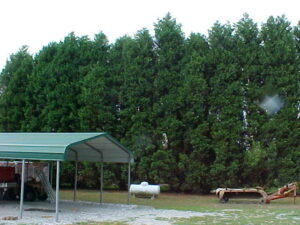Plant Health Alert – Leyland Cypress
go.ncsu.edu/readext?813320
en Español / em Português
El inglés es el idioma de control de esta página. En la medida en que haya algún conflicto entre la traducción al inglés y la traducción, el inglés prevalece.
Al hacer clic en el enlace de traducción se activa un servicio de traducción gratuito para convertir la página al español. Al igual que con cualquier traducción por Internet, la conversión no es sensible al contexto y puede que no traduzca el texto en su significado original. NC State Extension no garantiza la exactitud del texto traducido. Por favor, tenga en cuenta que algunas aplicaciones y/o servicios pueden no funcionar como se espera cuando se traducen.
Português
Inglês é o idioma de controle desta página. Na medida que haja algum conflito entre o texto original em Inglês e a tradução, o Inglês prevalece.
Ao clicar no link de tradução, um serviço gratuito de tradução será ativado para converter a página para o Português. Como em qualquer tradução pela internet, a conversão não é sensivel ao contexto e pode não ocorrer a tradução para o significado orginal. O serviço de Extensão da Carolina do Norte (NC State Extension) não garante a exatidão do texto traduzido. Por favor, observe que algumas funções ou serviços podem não funcionar como esperado após a tradução.
English
English is the controlling language of this page. To the extent there is any conflict between the English text and the translation, English controls.
Clicking on the translation link activates a free translation service to convert the page to Spanish. As with any Internet translation, the conversion is not context-sensitive and may not translate the text to its original meaning. NC State Extension does not guarantee the accuracy of the translated text. Please note that some applications and/or services may not function as expected when translated.
Collapse ▲
Leyland cypress trees are often planted too close together. This leads to depletion of soil nutrients and water, competition for light, insect infestations and fungal diseases.
When Leyland Cypress trees were first promoted by the nursery industry the plants were thought to be pest resistant. Unfortunately after hundreds of millions of these trees have been produced and planted in landscapes we have learned that Leyland cypress trees are prone to a number of diseases that tend to infest them and sometimes kill them. The plants start to fall apart just when the trees are at their most beautiful 10-20 years after planting.
Leyland cypress plants grow quickly making them popular as hedge plants. They grow so fast in fact that they can rapidly outgrow their soil space and use up soil nutrients. More often than not Leyland cypresses are planted too close together and have outgrown their space. The ultimate height and width of a Leyland Cypress is 150’x60′! If you plant them 10′ apart then they are bound to outgrow their allotted space.
Browning Needles
Many calls we get are about browning needles in Leyland cypress. Browning needles in the interior of conifers is a natural part of the plant getting larger and older. Conifers such as pine, cypress, cedar and arborvitae start out as young Christmas tree shaped plants. These young evergreen trees have limbs all the way to the ground and needles extending into the interior of the plant. As the plant gets larger, upper limbs begin to shade lower limbs. The interior of the plant gets shady. Since the only reason for a needle to exist is to gather sunlight, the plant stops supplying the needles in the shade with nutrients and the needles turn brown.
- During the winter months, prune out the dead branches.
- Remove trees that are mostly or totally dead.
- Hedge back the longer limbs that are touching other trees.
- During the growing season, fertilize the trees with 10-10-10 at 1 lbs per tree once in May and once in August.
- Irrigate the trees during periods of drought.






